Can the rise of women’s sport grow golf participation?
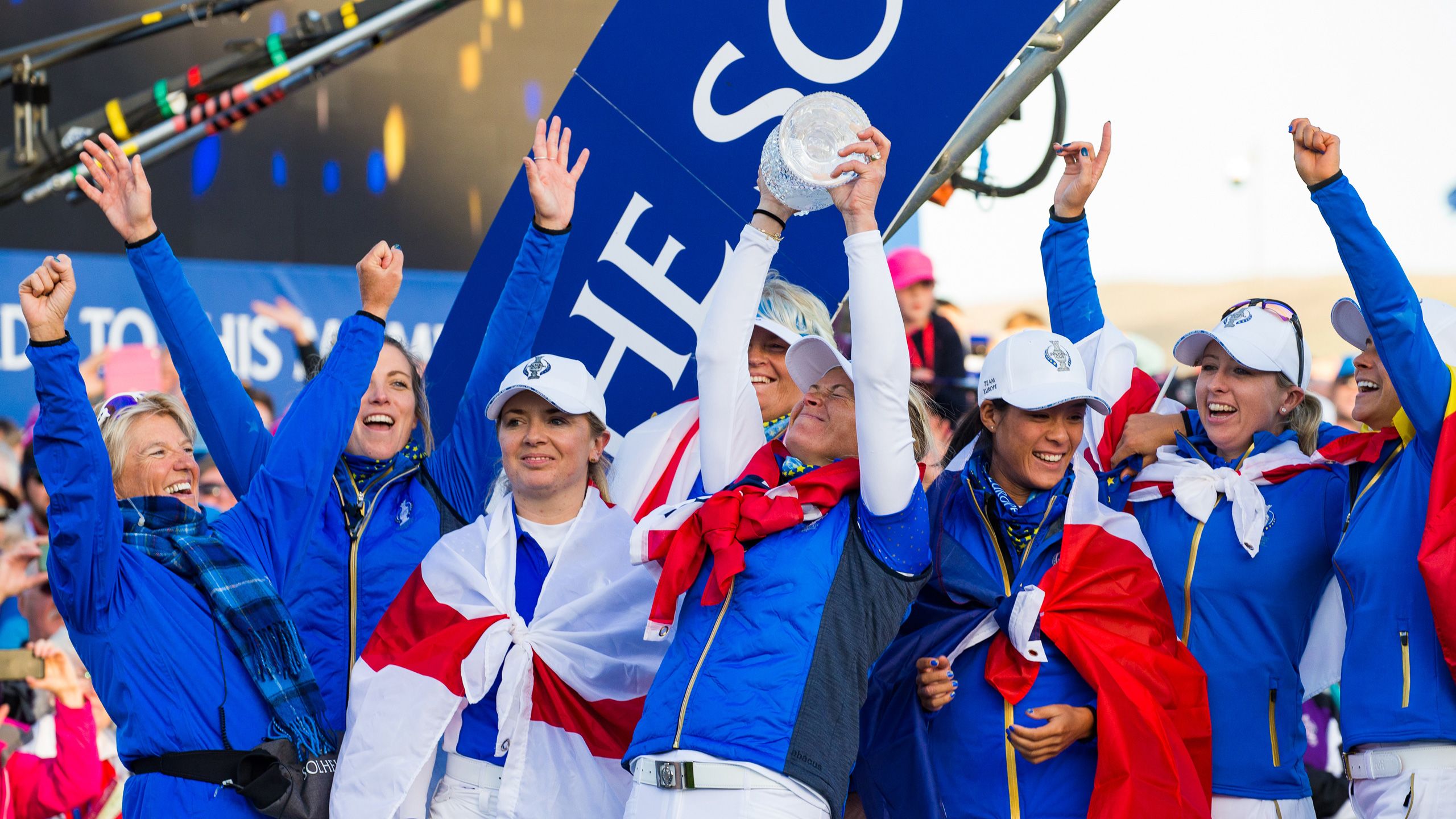
The climax to the 2019 Solheim Cup, with Europe grabbing victory on the final green, could not have been more dramatic.
“An iconic sporting memory that will last a lifetime,” was how BBC Golf Correspondent Iain Carter summed it up.
More than 90,000 fans witnessed the action at Gleneagles, Scotland.

Image credit: Mark Runnacles / Ladies European Tour
Image credit: Mark Runnacles / Ladies European Tour
Hundreds of thousands more would have viewed it live in the UK had it been on free-to-air TV, although satellite broadcaster Sky Sports’ production commitment and coverage matched that of The 2018 Ryder Cup.
BBC Sport broadcast hour-long primetime highlights each evening, as well as online and on BBC iPlayer, as part of its ‘Change the Game’ series of live women’s sports events.
But can the Solheim Cup, now rightfully considered equal to The Ryder Cup for sporting entertainment, if not commercial value, also reach, inspire and influence more women to take up golf?

Image credit: Tristan Jones / Ladies European Tour
Image credit: Tristan Jones / Ladies European Tour
The rise of women’s sport, including the record-breaking 2019 FIFA Women’s World Cup, estimated to have drawn a global TV audience of more than one billion viewers[1], is being linked to a take-up in participation in some sports.
But what does this mean for golf? Could alternative tournament formats increase audiences and fan numbers? Does media coverage of professional events actually matter? Or are there more influential or local factors at play? If so, what are they?
Syngenta Growing Golf looks at the rise of women’s sport, analyzes the latest market research and summarizes what golf clubs and courses need to know on what is influencing women to take up sport.
[1] FIFA
Golf’s “Massive” Opportunity
“Parallel men’s and women’s tournaments are a massive opportunity.”

Iain Carter believes the 2019 Solheim Cup compares with the best Ryder Cups, including the Miracle at Medinah
Iain Carter believes the 2019 Solheim Cup compares with the best Ryder Cups, including the Miracle at Medinah
Iain Carter is the BBC's Golf Correspondent and was at Gleneagles for the 2019 Solheim Cup, commentating on a momentous sporting event.
Looking at the wider professional game, he believes golf is missing out by not staging more men’s and women’s tournaments together.
Speaking shortly before the announcement of the new Scandinavian Mixed Tournament, to be hosted by Major Champions Henrik Stenson and Annika Sörenstam in Sweden in 2020, Carter said: “In my opinion, the opportunity to put on men’s and women’s events alongside each other is massive.
“You can have parallel men’s and women’s tournaments happening at the same time, on the same course or on the same site, sharing the same television coverage.

Tennis is among the sports to benefit from parallel men’s and women’s events
Tennis is among the sports to benefit from parallel men’s and women’s events
“It would work particularly well at match play events, which often suffer at the weekend because there aren’t enough matches to sustain television coverage. You can also play golf in partnership very successfully, between men and women.”
The joint European Tour and Ladies European Tour event in Stockholm in June 2020 will feature 78 men and 78 women.
Carter’s view on parallel events is supported by Nielsen’s 2018 report, ‘The Rise of Women’s Sport’, which highlighted the link between greater interest in women’s sports when staged alongside men’s events.
Carter, who also co-presents The Cut, the BBC’s golf podcast, is forthright on golf lagging behind other sports: “I think golf has really let itself down in many respects, in the sense that it hasn’t embraced these options and it is already behind the curve of the promotion of women’s sport and the sharing of platforms.
“It’s moved in that direction – I don’t want to say in token ways – but it could move faster and further. Actually, if golf were to do that, it could potentially shed very, very quickly the biggest problem it has, which is that it is regarded as still being elitist and male dominated.”
Carter concludes, “If golf were to take the lead and move dramatically in that direction, rather than seemingly being dragged by the general trend that is happening across sport, then I think that golf could really reap a massive dividend.”
Listen to the full podcast interview with Iain Carter:
Solheim Cup images: Ladies European Tour, Phil Inglis & Tristan Jones
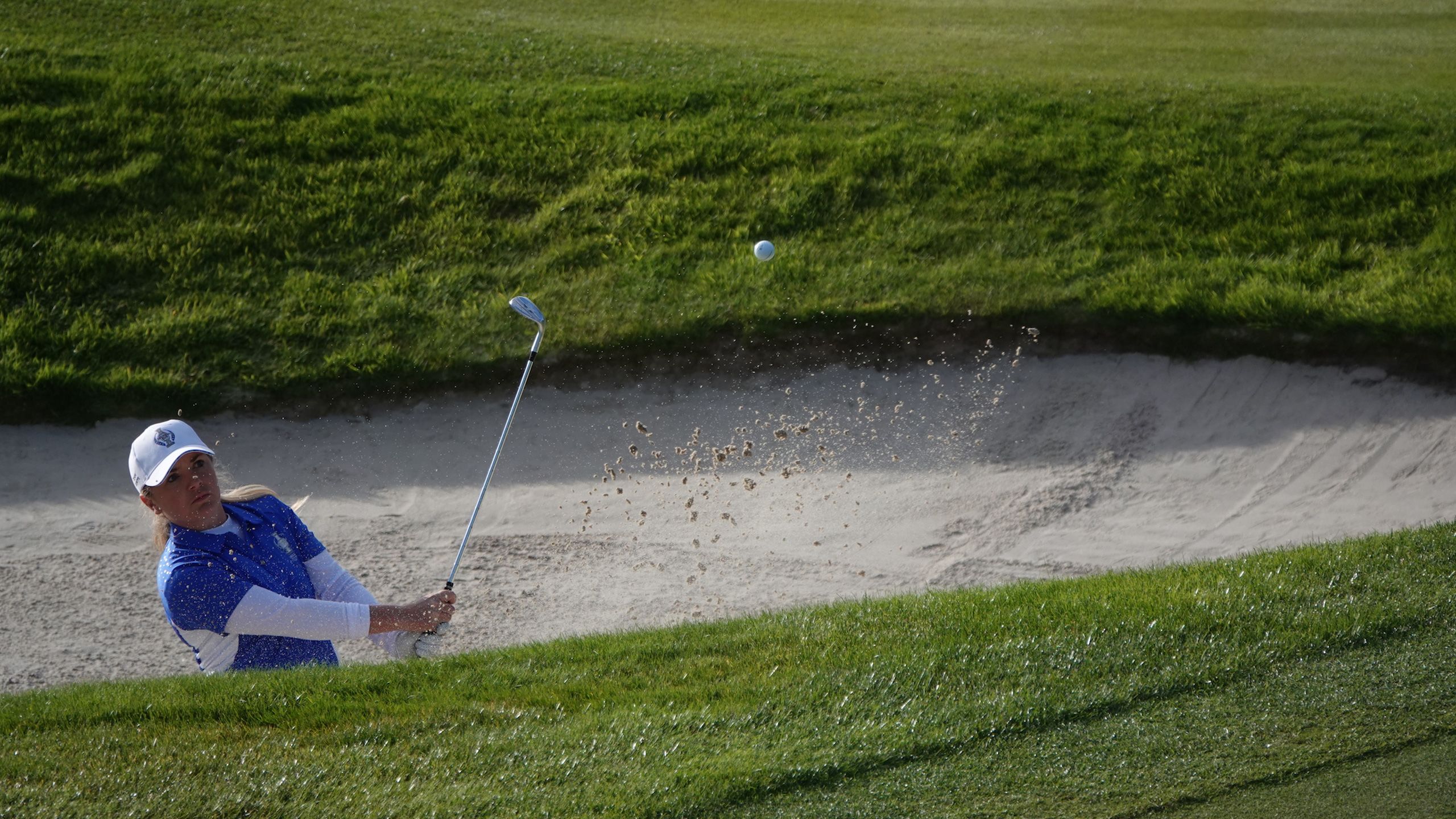

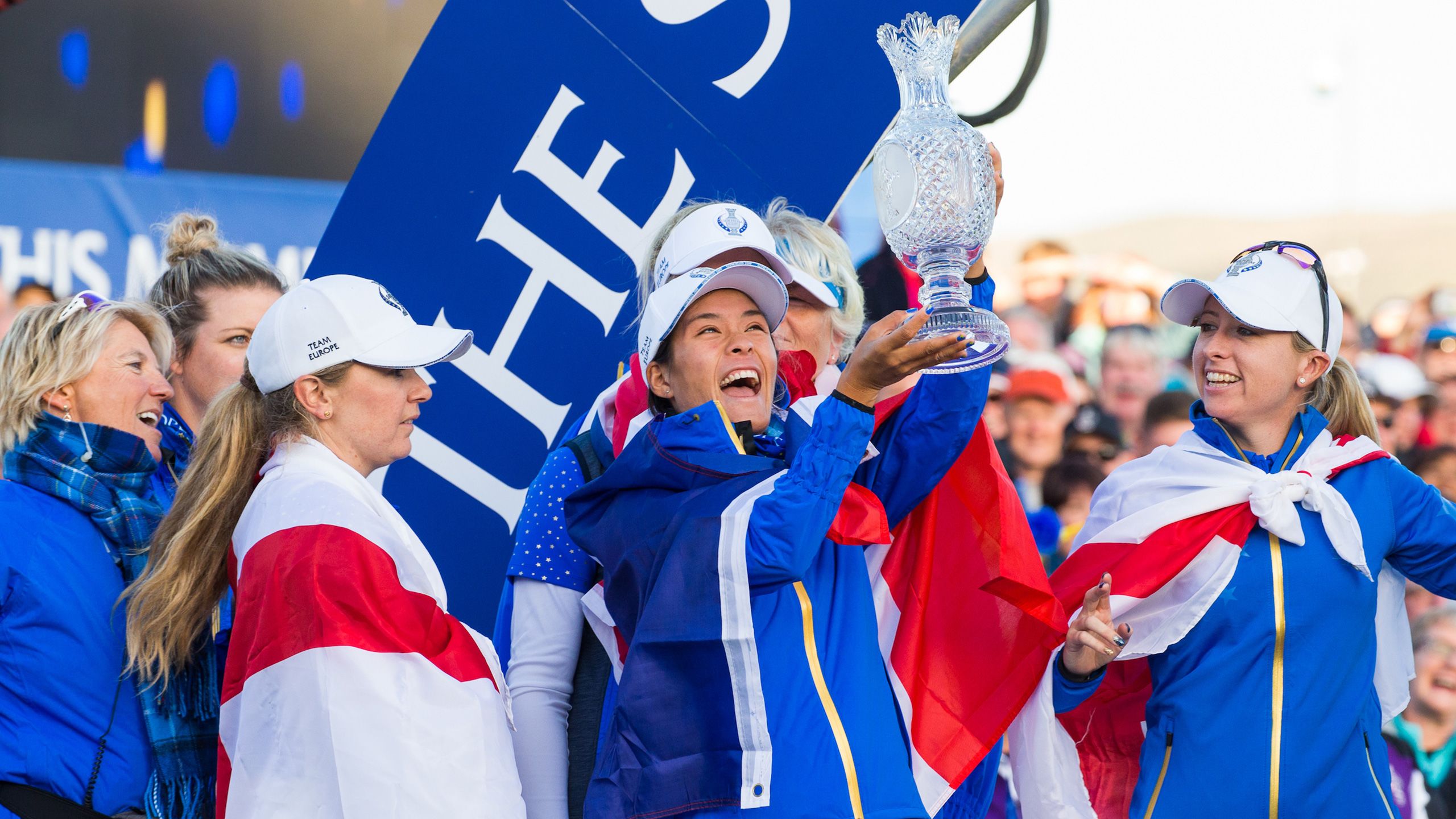
The Rise of Women's Sports
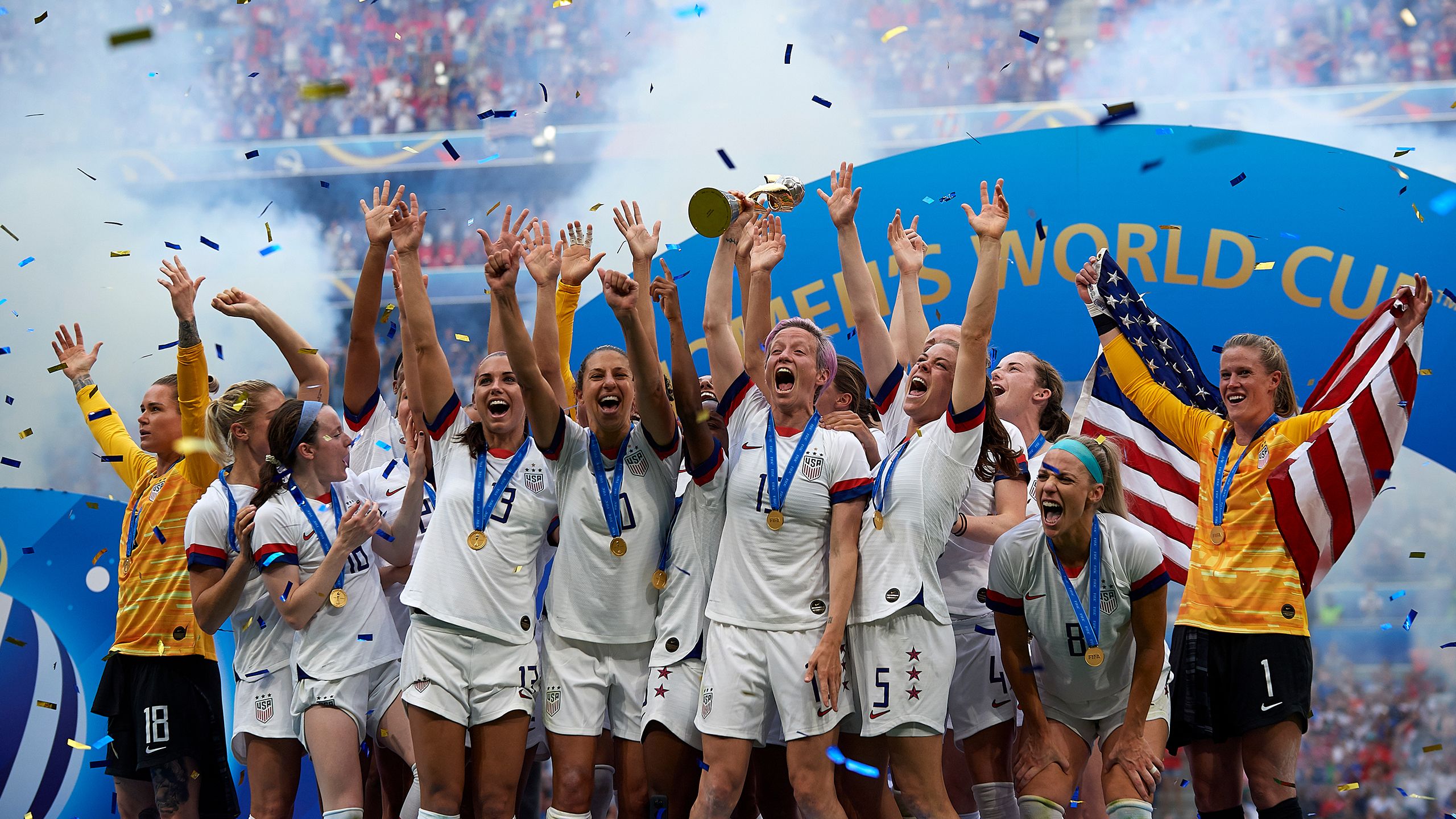
The 2019 FIFA Women’s World Cup in France was a record-breaker for women’s sport.
More than 200 broadcasters beamed pictures to more than a billion viewers.
Almost 59 million people tuned in to Brazil’s knock-out match against France in the last 16, the most watched women’s football match of all time.
In the United States, interest in the tournament and the winning team generated TV advertising sales of nearly $100 million, while Nike confirmed its United States Women’s National Soccer Team home jersey has become its biggest selling soccer shirt of all time – men’s or women’s.
The interest in the Women’s World Cup and its impact is part of a wider trend.
In 2018, global measurement and analytics company Nielsen published a detailed study, ‘The Rise of Women’s Sports: Identifying and Maximizing the Opportunity.’
Tracking the development of women’s professional sport in eight countries, the report focuses on consumers: who’s engaging with women’s sport, how they’re watching and consuming sport, as well as attitudes towards sponsors associated with women’s sport. In short, the sports marketing perspective, not participation.
But the report, which acknowledges tennis and golf’s leadership in the professionalization and commercialization of professional women’s sports, brings to light important and relevant insights.
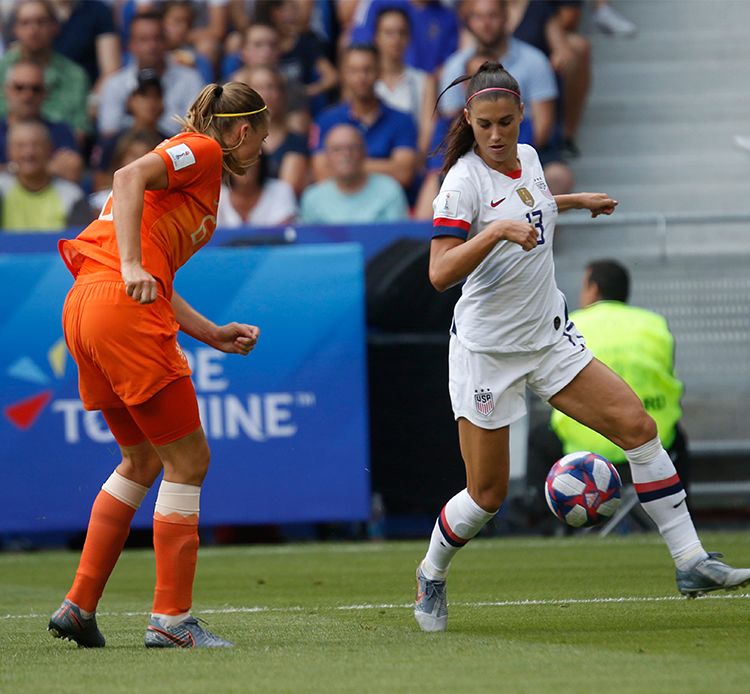
Image credit: Romain Biard
Image credit: Romain Biard

Image Credit: Jose Breton- Pics Action
Image Credit: Jose Breton- Pics Action
Insight #1
A large proportion of general sports fans (84%) have an interest in women’s sports, of which 51% are male and 49% are female. As the report states, this debunks the theory that only women are interested in women’s sports and demonstrates that women’s sports represent an opportunity to engage both male and female fans.

Insight #2
Interest levels in women’s sports are higher among specific sports fans when men’s and women’s events are staged together. Athletics track and field (89%), tennis (86%) and triathlon (81%) are the leading examples of this.
For sports staged separately, golf achieves the highest interest levels (61%), followed by cricket (52%) and cycling (51%).
It raises the question, how much more interest might there be if men’s and women’s golf events were staged together regularly?
(Next year’s Olympics in Japan could be an indicator of this, while the 2019 Jordan Mixed Open presented by Ayla went a step further by becoming the first full-field mixed professional tournament.)
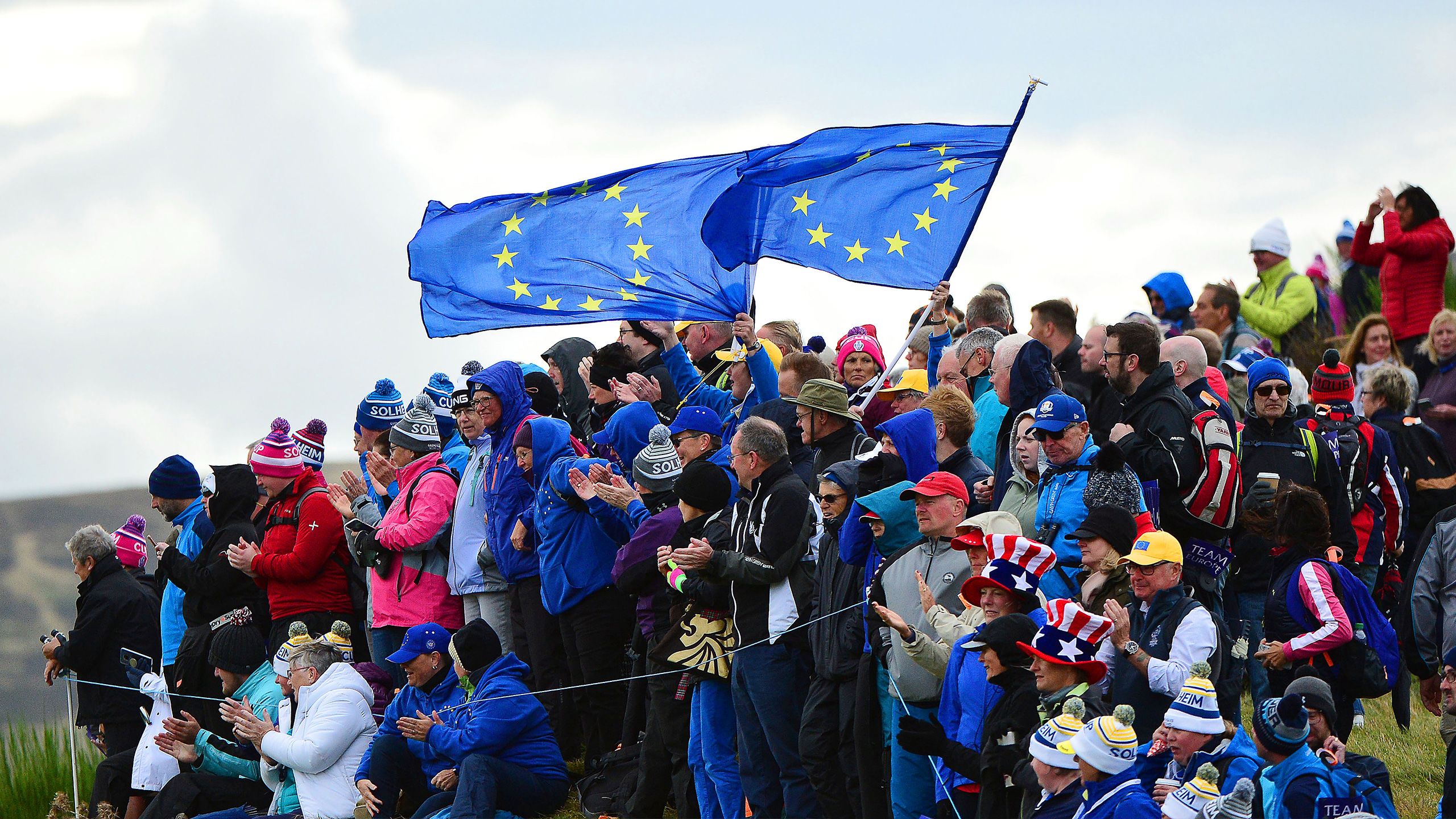
Insight #3
The potential fan base for golf is significant.
According to Nielsen, it could be as much as 52 million, although football (soccer) has by far the largest potential fan base. Before the World Cup, it was estimated to be 105 million. It could now be higher.

The Challenges

However, golf also faces fundamental challenges.
Its leading players do not benefit from the same level of awareness as other sports.
Across the eight countries surveyed by Nielsen – UK, USA, Australia, France, Germany, Italy, New Zealand and Spain – only one golfer made it into the top three most recognizable female athletes in each country: Lydia Ko (pictured below) was the third most recognizable female athlete among New Zealand sport fans.
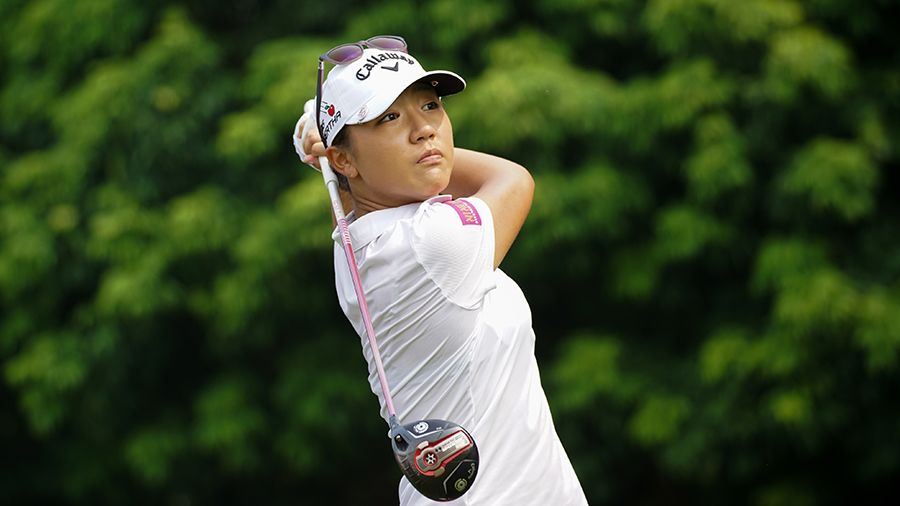
Image Credit: CHEN WS
Image Credit: CHEN WS
Awareness of golf events is also comparatively low. Less than a third (29%) of those surveyed were aware of Ladies European Tour events.
Golf may benefit from the shift to more sports coverage via online streaming – Golf TV by Discovery is the first global mover in this field – but it’s early days.
An important question for the golf industry as a whole is what role does coverage of golf events on TV and online actually have in influencing consumers to participate. After all, it’s participation that sustains golf businesses on the ground.
A global economic opportunity
Syngenta Growing Golf’s report, ‘The Global Economic Value of Increased Female Participation in Golf’, identified the scale of the opportunity for golf.

Focusing on eight markets, the report highlighted that only 24% of golf’s current customers are female, but there were high levels of interest in the game from outside.
In fact, 29% of the 3,515 non-golfers surveyed said they would be ‘interested’ or ‘very interested’ in taking up the game in the next two years.
In economic terms, the total value of the opportunity to the golf industry is equivalent to 36.9 million additional players, worth $35 billion a year.
The survey also asked non-golfing women how they had been exposed to golf.
The number one touchpoint was television (62%), followed by friends who play (43%) and Putt-Putt / Crazy Golf (24%).
But what is it about golf that appeals to non-players?
‘Being outdoors’ and ‘stress relief’ were the top two answers among the non-golfers interested in the sport.
So does tournament golf on TV reflect what prospective customers are actually interested in?
The Solheim Cup, after all, is an international team match. It’s about competition, fans and sporting drama.
Comments captured during focus groups to support the research demonstrate something interesting about golf on TV, indicating viewers can see beyond the sports event itself.
One non-golfer said: “When I see golf on TV, it looks so relaxing and it looks so calm. It looks beautiful.”
Perhaps, then, golf on TV can showcase the elements that pique the interest of non-golfers, including being outdoors. Anyone watching the Solheim Cup at Gleneagles could not have missed the natural beauty of the landscape.
So what more can golf learn in terms of understanding what reaches and engages prospective customers, and then, critically, converts them?
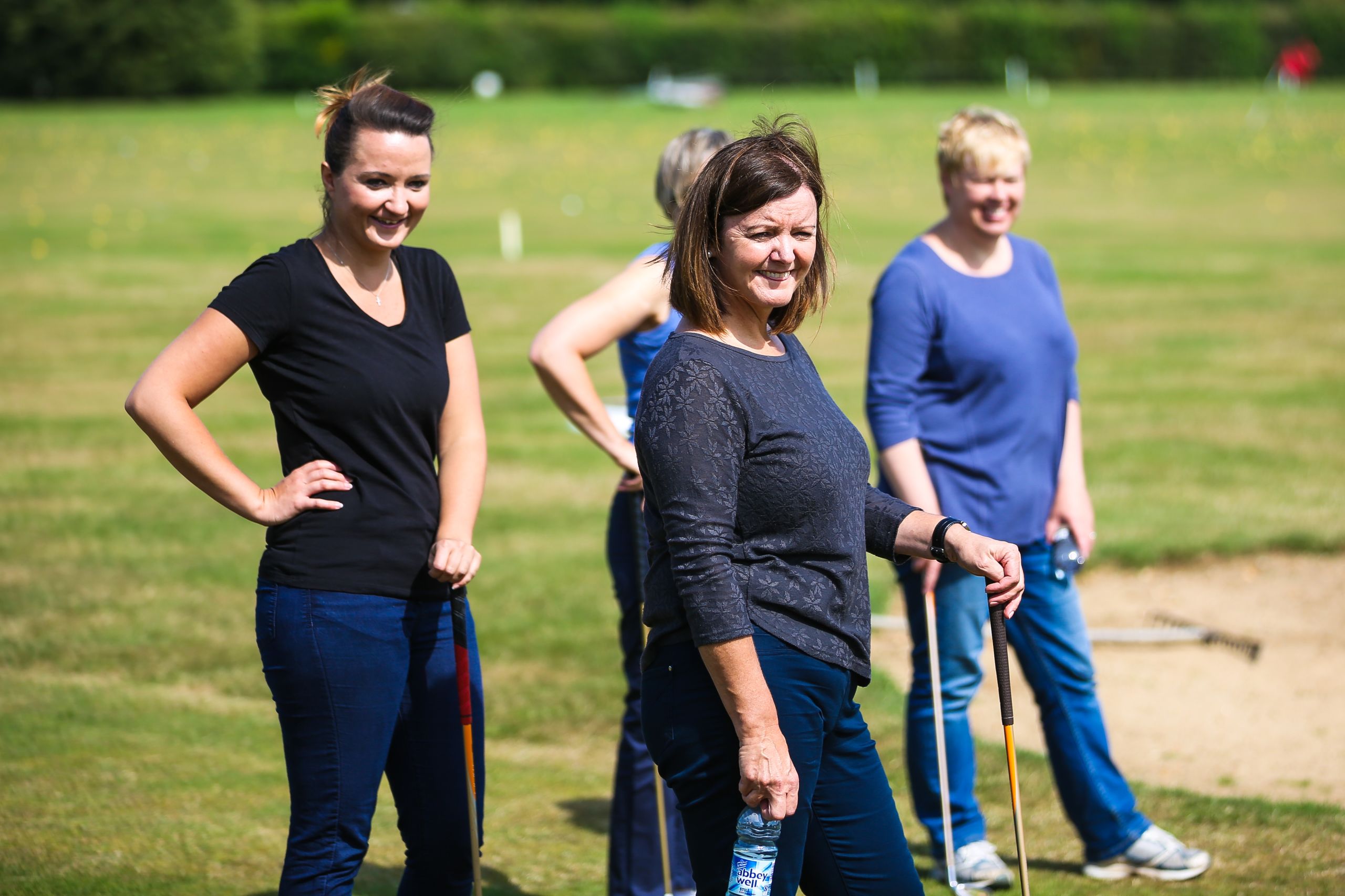
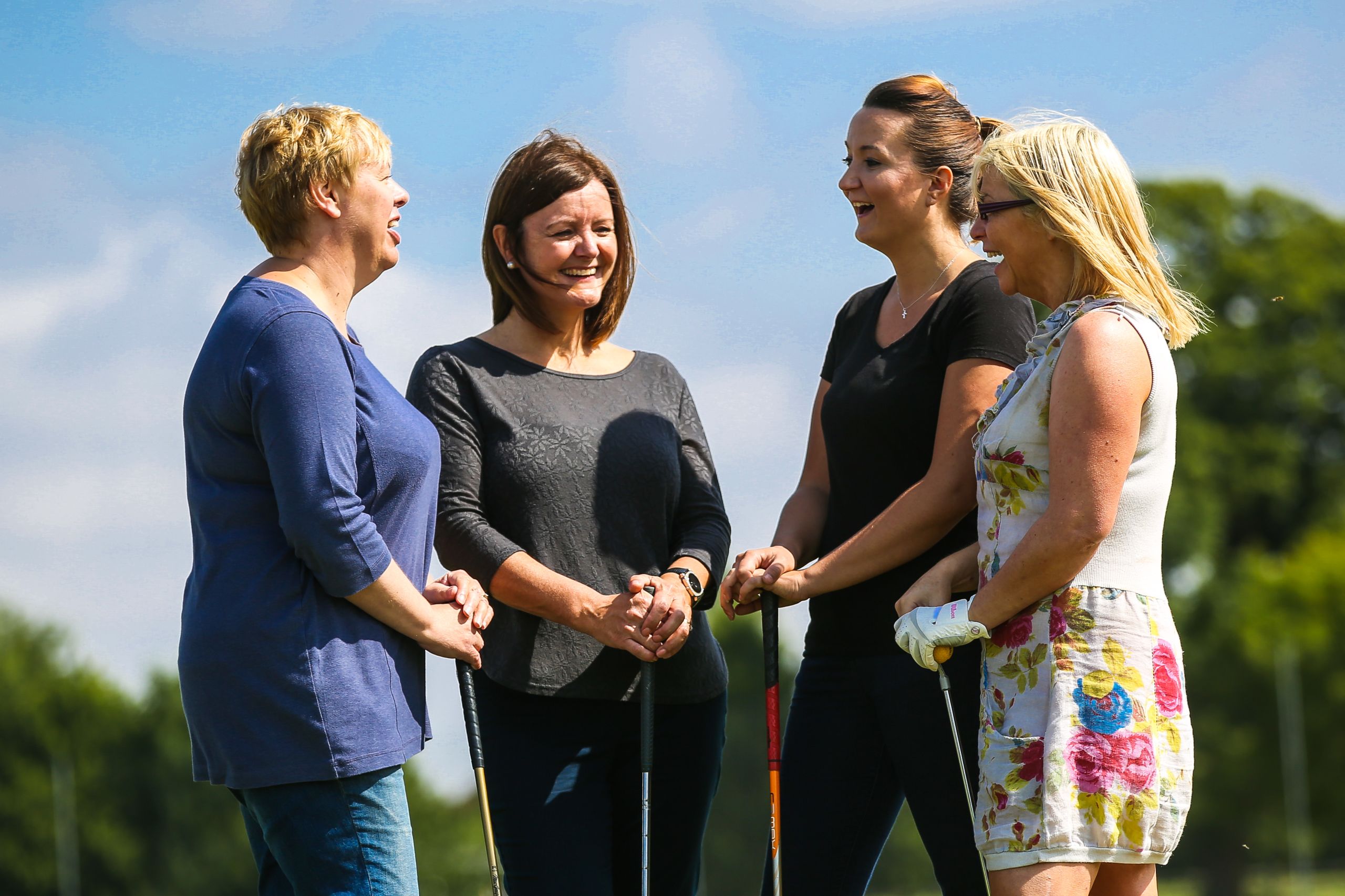
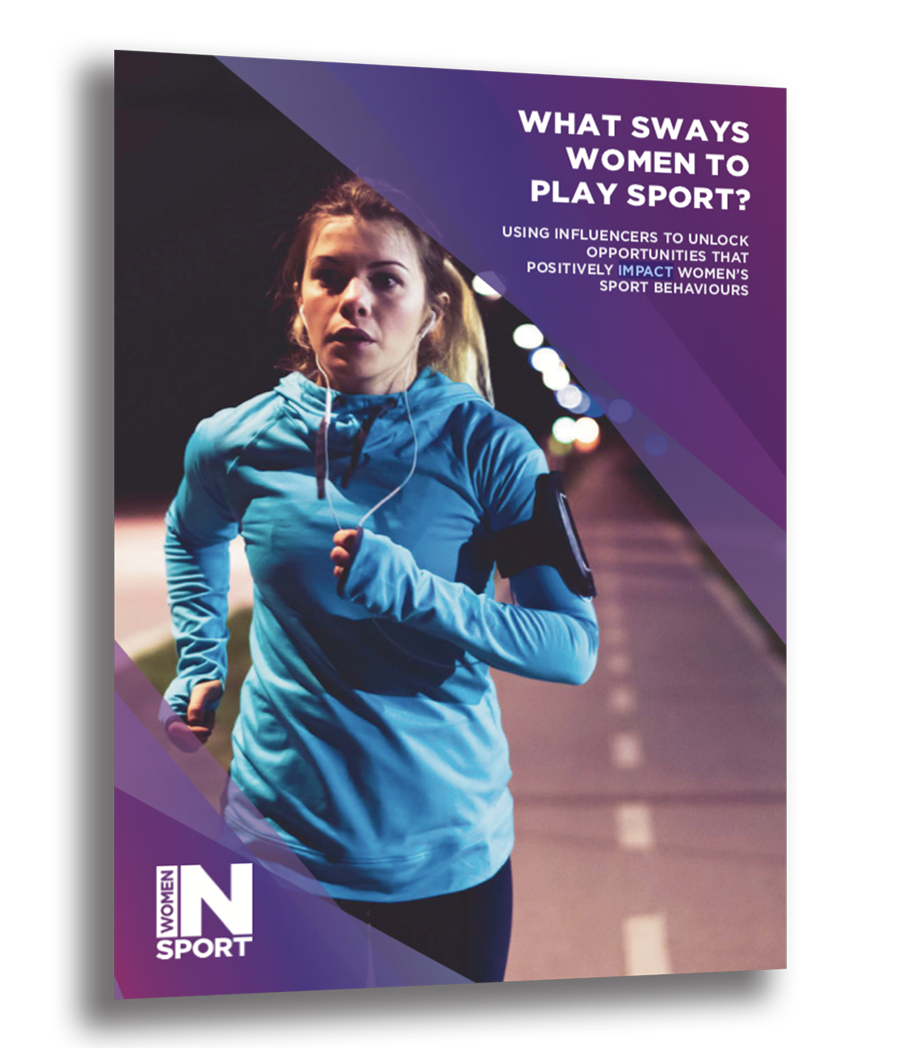
What sways women to play sport?
In 2015, Women in Sport in collaboration with The Behavioural Architects published the research report ‘What sways women to play sport.’
Fuelled by the startling statistic that 1.9 million fewer women than men in the UK play sport once a week[1], the report took a deep dive into the psychology of participation.
It found that female take-up of sport is a result of a larger number of people and ‘influencers’ than previously assumed.
While role models – elite athletes and celebrities seen on TV – can play an important role in shaping social and cultural norms, three other influencer groups are powerful:
· Families, peers and mentors (those in the individual’s immediate social network, who may introduce a prospect to golf)
· Local community (for golf, this could be nearby clubs, courses, coaches and other players)
· Sports community (the wider golf industry, including participation initiatives and brands)
Interestingly, the research identified that influencers do not always realize how much they can influence someone into taking up sport. Indeed, some might not choose to be an influencer but are anyway.
The study went further into identifying the motivations for taking part in sport.
Ultimately, it led the researchers to the development of the ‘Model of influence’ and ‘Six key spheres of influence.’
[1] Active People Survey 8, Sport England
Women in Sport conclude that influencers can include anyone and everyone, and that influencers can genuinely impact participation behaviour.
The organization also believes the Model of Influence and the sway factors can be leveraged by sports providers to drive participation.
So, how can this be applied to golf?
Influencing New Golfers
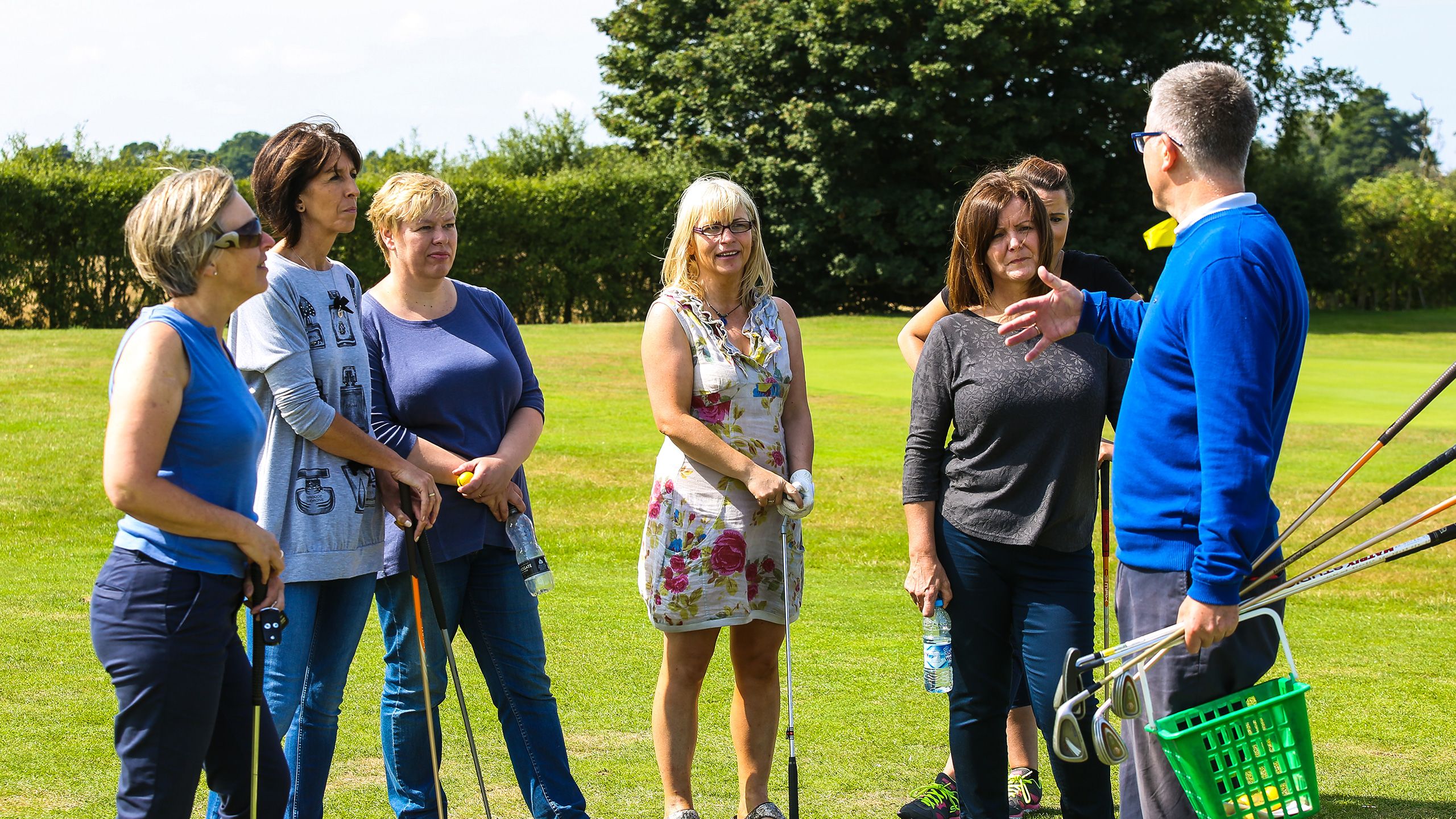
Alastair Spink (pictured) is a PGA Fellow Professional and the founder of love.golf a group coaching program for women, supported by Syngenta.
Based on Spink’s academic work at the University of Birmingham and Syngenta’s market research, the love.golf experience is built on a group dynamic and learning skills through play on the course, as opposed to one-to-one coaching on a range.
Former Solheim Cup Captain Carin Koch drops in to a love.golf session and speaks to new female golfers.
This alternative approach has proved popular among participants and coaches alike, with more than 30 coaches active in the UK, including Gleneagles where the resort is looking to activate its hosting of The Solheim Cup.
Spink says the Six Spheres of Influence identified by Women in Sport are absolutely relevant to golf and chime with his own findings.
“In my experience, the Six Spheres of Influence are spot on,” he says. “They are six headline topics that can be really useful for coaches, golf clubs and the whole of the industry to put some plans to.
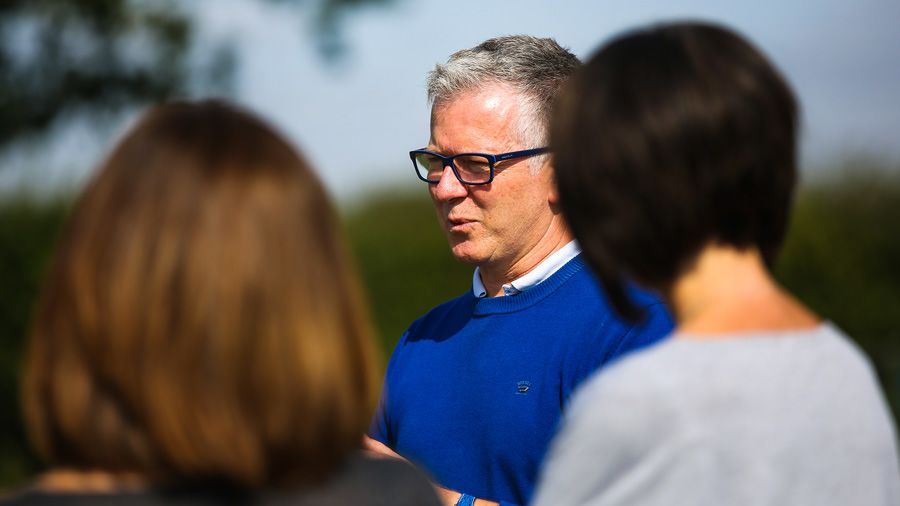
Alastair Spink leads a love.golf session at Fynn Valley Golf Club in Suffolk, UK
Alastair Spink leads a love.golf session at Fynn Valley Golf Club in Suffolk, UK
“For me, the factor that matters most is ‘belonging’. Being part of something, feeling welcome, feeling valued and having an input into their experience is really key.
“But to achieve this, a club has to change its mindset from top to bottom. Whether it is a private or proprietary club, everyone has to buy into this mindset.”
Spink continues, “I go to quite a lot of golf clubs and they will say they are family friendly or they will say ‘all welcome’, but are they? In my experience, a lot of clubs have put that on a board at the front of the drive, but in reality it has to go way beyond that.
“For many clubs it means starting again. Club leaders need to drive out the gates, two miles away, transform themselves into non-golfers, turn around and drive back through the gates and view it from that lens. A club will be really surprised what they can see themselves.”
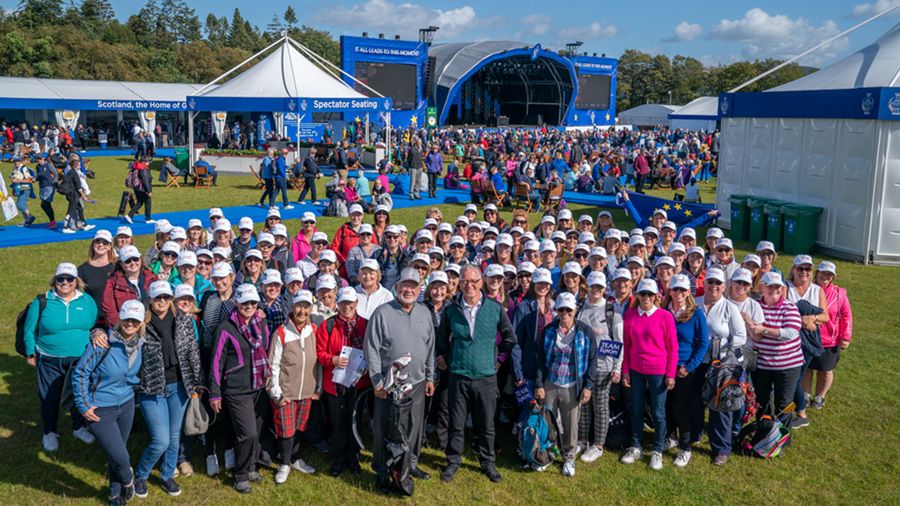
120 love.golfers with Ping's John Solheim at The 2019 Solheim Cup
120 love.golfers with Ping's John Solheim at The 2019 Solheim Cup
More than 120 love.golf participants – ‘love-dot-golfers’ as they are known – travelled to Gleneagles to watch The Solheim Cup and were inspired by who and what they saw.
To hear the full story and learn more about Alastair Spink’s work, watch the video interview:
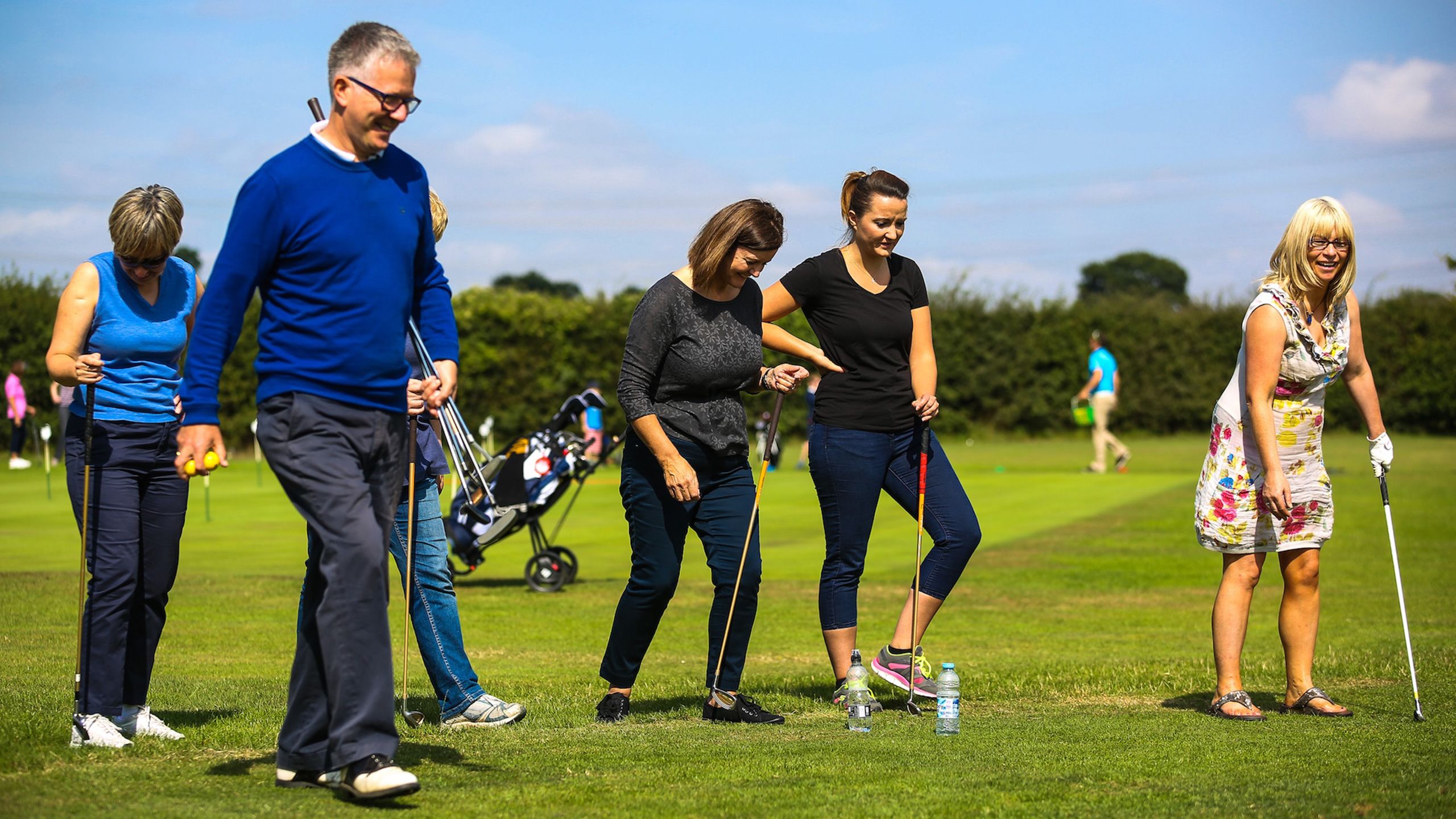
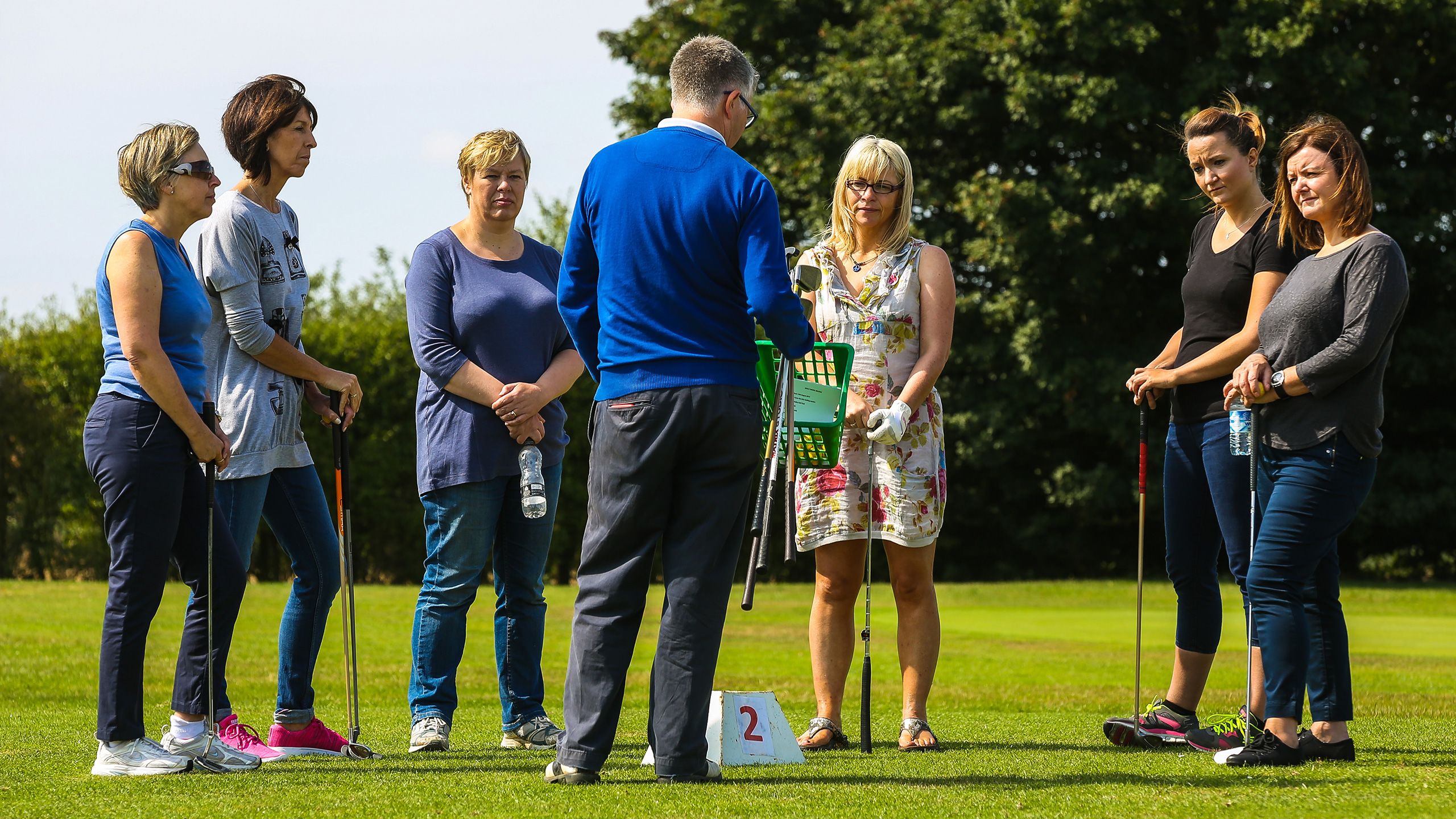
Turning fans into golfers
As sports fans turned off their TVs, radios, iPads and mobiles following Europe’s momentous Solheim Cup victory, golf may have felt, justifiably, it had put on a great sporting spectacle.
It had. For those who witnessed it, it was a world-class showcase for the sport.
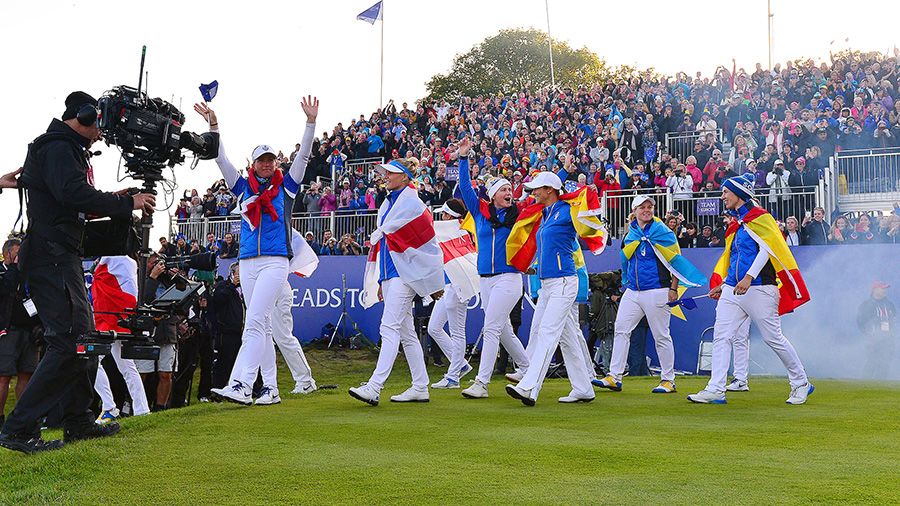
Image credit: Mark Runnacles / Ladies European Tour
Image credit: Mark Runnacles / Ladies European Tour
As Iain Carter suggests and Nielsen’s research shows, parallel tournaments and new formats such as the Scandinavian Mixed could significantly raise interest levels in the women’s game.
But for the grass roots golf industry to benefit from the rise in women’s sport, it cannot rely on TV, tournaments and top professionals alone.
Greater awareness and engagement is beneficial, of course, but clubs, courses and coaches can capture the opportunity if they understand and leverage the influence points – and the influencers – that are often closer to home.
As Alastair Spink suggests, for some clubs it may mean reimagining the golf experience through the lens of a female non-golfer. And the best way of doing that may even be to drive out the gates, return with a new perspective and start afresh.


